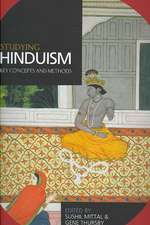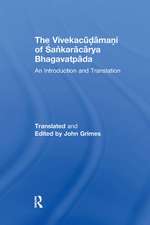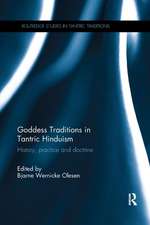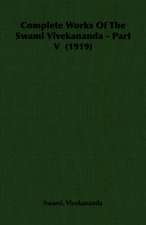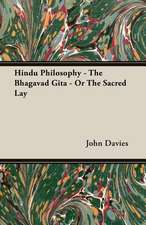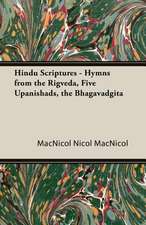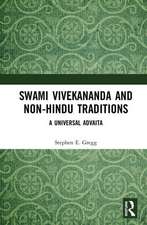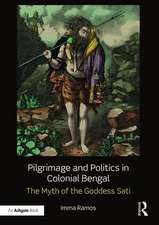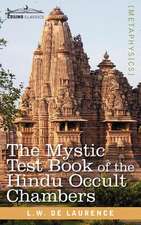Monastic Wanderers: Nāth Yogī Ascetics in Modern South Asia
Autor Veronique Bouillieren Limba Engleză Hardback – 27 iul 2017
The Nāth monasteries belong to two categories: the pañcāyati maṭhs, collectively owned and managed by the sectarian authorities, which ensure the permanency of the sect, and the nījī maṭhs, owned on a personal basis and transmitted from guru to disciple, which permits innovative initiatives
The book gives a detailed account of two pañcāyati monasteries, the Kadri Maṭh of Mangalore where its head’s enthronement is spectacularly performed every twelve years, and the Caughera Maṭh of Dang Valley in Nepal, the royal foundation of which gives a glimpse of the complex relationships that can exist between monasteries and kingdoms. It then focuses on three nījī maṭhs: Amritashram in Fatehpur (Rajasthan), Ashtal Bohar in Rohtak (Haryana) and the Gorakhpur mandir (UP). Each of them shows a different mode of adaptation to a modern context and attests of the present importance and continuity of this pluri-secular tradition of asceticism.
| Toate formatele și edițiile | Preț | Express |
|---|---|---|
| Paperback (1) | 255.39 lei 6-8 săpt. | |
| Taylor & Francis – 25 iun 2024 | 255.39 lei 6-8 săpt. | |
| Hardback (1) | 759.80 lei 6-8 săpt. | |
| Taylor & Francis – 27 iul 2017 | 759.80 lei 6-8 săpt. |
Preț: 759.80 lei
Preț vechi: 1027.40 lei
-26% Nou
Puncte Express: 1140
Preț estimativ în valută:
145.41€ • 153.39$ • 121.53£
145.41€ • 153.39$ • 121.53£
Carte tipărită la comandă
Livrare economică 31 decembrie 24 - 14 ianuarie 25
Preluare comenzi: 021 569.72.76
Specificații
ISBN-13: 9781138095397
ISBN-10: 1138095397
Pagini: 376
Ilustrații: 3 Line drawings, black and white; 16 Halftones, black and white; 1 Tables, black and white
Dimensiuni: 152 x 229 x 29 mm
Greutate: 0.45 kg
Ediția:1
Editura: Taylor & Francis
Colecția Routledge
Locul publicării:Oxford, United Kingdom
ISBN-10: 1138095397
Pagini: 376
Ilustrații: 3 Line drawings, black and white; 16 Halftones, black and white; 1 Tables, black and white
Dimensiuni: 152 x 229 x 29 mm
Greutate: 0.45 kg
Ediția:1
Editura: Taylor & Francis
Colecția Routledge
Locul publicării:Oxford, United Kingdom
Public țintă
PostgraduateCuprins
Introduction,
PART I: NĀTH YOGĪS’ IDENTITY
Nine Nāths and Eightyfours Siddhas, Gorakhnāth, Gorakhnāth’s Textual Corpus, Haṭha Yoga, Legends and Powers, Deities, Gorakhnāth as God, The Goddess, Bhairav, 2. Belonging to the Sampradāya, Initiations, Last Rites, Sect Organization, The Panths, The Mahāsabhā, 3. Wandering Ascetics
PART II: COLLECTIVE MONASTERIES
The Kadri Maṭh: History, Mangalore- the Town and its Temples, A Reading of the Legend of Paraśurām: Manjunāth’s Appearance, The Kadalī Mañjunātha Māhātmyaṁ, Mañjunāth Temple and its History, The Tenth Century statues: Buddhist or Shaivite?, Lokeśvara: A Transitional God, Kadri or Kadalī Van: The Plantain Forest- the Goddess Mangalādevī and the Nāth Anchorage, Historical Hypothesis, The Kadri Monastery in Modern Times, The Monastic Structure, 5. Kadri Rājā’s Enthronement, Siṁhastha Kumbh Melā: Tryambakeshvar, The Selection of the Rājā, The Cult of the Pātradevatā: The Making of a Community, The Ascetic Pilgrimage, The enthronement of the Kadri Rājā, The Arrival of the Jhuṇḍī, The Vittal Monastery, The Consecration or Paṭṭabhiṣek, Adhikār- Entitlement: Enthronement and Coronation, Parting with the Pātradevatā, Comparison with other Consecration Rituals, Comparison with other Nāth Monasteries, Other Monastic Investitures, Installation Ceremonies of the Kings Another Model: The Consecration of a Spiritual Master, Back in Kadri: An Original Synthesis, 6. Caughera Maṭh (Dang Valley, Nepal): Legends of Foundation, Yogīs and Kings, Caughera Monastery: The Place, The Legends of Ratannāth, Ratan’s Initiation: Local Roots, Nāth Legitimation: Ratannāth as Kanīpā, Ratannāth, Ratan Bābā, Hajji Ratan, Ratannāth’s Travels as Narrated in Caughera, Ratan and Gogā Pīr: A Samādhi in Gogamedhi, Hajji Ratan of Bhatinda, Ratan al-Hindī: Muslim Polemical Accounts, Back to Caughera: Hindu and Muslims, 7. The Yogīs in the Kingdom: Ritual Services and Wordly Possessions, Caughera Rituals, The Nitya Pūjā: Daily Ritual, Pīrsthāpanā, Caughera Monastic Properties, Caughera Status vis-à-vis its Dependants, The Monastery and the State: Control and Conflicts
PART III: PERSONAL MONASTERIES
8. Fatehpur Ashram, Hagiography: Amritnāth and the Monastic Foundation, Amritnāth’s Youth, His Life as an Ascetic, Analysis: A Hagiography in a Familiar Space, 9. Institutionalization of the
Fatehpur Ashram’s Nāth Belonging, Amritnāth’s Affiliation, Amritnāth’s Succession, Transmission and Growth of the Mannāthī Panth, The Throne and the Tomb, Dhūnī and Guphā (the Fire-place and the Cave), 10. Lay Followers, Patronage and Sevā: Fatehpur and Gorakhpu, Fatehpur, the Marwari Network, Devotees’ Duties, Devotees’ Expectations and Guru’s Powers, Festivals, Gorakhpur, a Political Monastery, 11. Asthal Bohar: A New Synthesis, Foundation Legends, Cauraṇgīnāth, Mastnāth, Mastnāth and the Āī Panth, Mastnāth and the two Brothers who became his Disciples, The Fire of the Ascetics: The Choṭī Dhūnī, The Baṛī Gaddī: The Big Throne, Mahants and Kings, The New Mahants: Social Service and Politics, The Annual Festivals
PART IV: YOGĪS BY CASTE
12.The Grihastha or Householder Yogis, Celibacy and the Nāth Sampradāya, Ambiguous Categories, Grihastha Yogīs and Nāth Sampradāya, Dang Caughera, Mangalore, Pushkar, Gwalior: Ḍholibuva Tradition, Gorkha, Rajasthan, Dasnāmī Pūjā, Updeśī, Grihasthas and Tantrisme, Observations
13. Conclusion
PART I: NĀTH YOGĪS’ IDENTITY
Nine Nāths and Eightyfours Siddhas, Gorakhnāth, Gorakhnāth’s Textual Corpus, Haṭha Yoga, Legends and Powers, Deities, Gorakhnāth as God, The Goddess, Bhairav, 2. Belonging to the Sampradāya, Initiations, Last Rites, Sect Organization, The Panths, The Mahāsabhā, 3. Wandering Ascetics
PART II: COLLECTIVE MONASTERIES
The Kadri Maṭh: History, Mangalore- the Town and its Temples, A Reading of the Legend of Paraśurām: Manjunāth’s Appearance, The Kadalī Mañjunātha Māhātmyaṁ, Mañjunāth Temple and its History, The Tenth Century statues: Buddhist or Shaivite?, Lokeśvara: A Transitional God, Kadri or Kadalī Van: The Plantain Forest- the Goddess Mangalādevī and the Nāth Anchorage, Historical Hypothesis, The Kadri Monastery in Modern Times, The Monastic Structure, 5. Kadri Rājā’s Enthronement, Siṁhastha Kumbh Melā: Tryambakeshvar, The Selection of the Rājā, The Cult of the Pātradevatā: The Making of a Community, The Ascetic Pilgrimage, The enthronement of the Kadri Rājā, The Arrival of the Jhuṇḍī, The Vittal Monastery, The Consecration or Paṭṭabhiṣek, Adhikār- Entitlement: Enthronement and Coronation, Parting with the Pātradevatā, Comparison with other Consecration Rituals, Comparison with other Nāth Monasteries, Other Monastic Investitures, Installation Ceremonies of the Kings Another Model: The Consecration of a Spiritual Master, Back in Kadri: An Original Synthesis, 6. Caughera Maṭh (Dang Valley, Nepal): Legends of Foundation, Yogīs and Kings, Caughera Monastery: The Place, The Legends of Ratannāth, Ratan’s Initiation: Local Roots, Nāth Legitimation: Ratannāth as Kanīpā, Ratannāth, Ratan Bābā, Hajji Ratan, Ratannāth’s Travels as Narrated in Caughera, Ratan and Gogā Pīr: A Samādhi in Gogamedhi, Hajji Ratan of Bhatinda, Ratan al-Hindī: Muslim Polemical Accounts, Back to Caughera: Hindu and Muslims, 7. The Yogīs in the Kingdom: Ritual Services and Wordly Possessions, Caughera Rituals, The Nitya Pūjā: Daily Ritual, Pīrsthāpanā, Caughera Monastic Properties, Caughera Status vis-à-vis its Dependants, The Monastery and the State: Control and Conflicts
PART III: PERSONAL MONASTERIES
8. Fatehpur Ashram, Hagiography: Amritnāth and the Monastic Foundation, Amritnāth’s Youth, His Life as an Ascetic, Analysis: A Hagiography in a Familiar Space, 9. Institutionalization of the
Fatehpur Ashram’s Nāth Belonging, Amritnāth’s Affiliation, Amritnāth’s Succession, Transmission and Growth of the Mannāthī Panth, The Throne and the Tomb, Dhūnī and Guphā (the Fire-place and the Cave), 10. Lay Followers, Patronage and Sevā: Fatehpur and Gorakhpu, Fatehpur, the Marwari Network, Devotees’ Duties, Devotees’ Expectations and Guru’s Powers, Festivals, Gorakhpur, a Political Monastery, 11. Asthal Bohar: A New Synthesis, Foundation Legends, Cauraṇgīnāth, Mastnāth, Mastnāth and the Āī Panth, Mastnāth and the two Brothers who became his Disciples, The Fire of the Ascetics: The Choṭī Dhūnī, The Baṛī Gaddī: The Big Throne, Mahants and Kings, The New Mahants: Social Service and Politics, The Annual Festivals
PART IV: YOGĪS BY CASTE
12.The Grihastha or Householder Yogis, Celibacy and the Nāth Sampradāya, Ambiguous Categories, Grihastha Yogīs and Nāth Sampradāya, Dang Caughera, Mangalore, Pushkar, Gwalior: Ḍholibuva Tradition, Gorkha, Rajasthan, Dasnāmī Pūjā, Updeśī, Grihasthas and Tantrisme, Observations
13. Conclusion
Descriere
This book gives a detailed account of two pañcāyati monasteries, the Kadri Maṭh of Mangalore where its head’s enthronement is spectacularly performed every twelve years, and the Caughera Maṭh of Dang Valley in Nepal, the royal foundation of which gives a glimpse of the complex relationships that can exist between monasteries and kingdoms. It then focuses on three nījī maṭhs: Amritashram in Fatehpur (Rajasthan), Ashtal Bohar in Rohtak (Haryana) and the Gorakhpur mandir (UP). Each of them shows a different mode of adaptation to a modern context and attests of the present importance and continuity of this pluri-secular tradition of asceticism.
Notă biografică
Véronique Bouillier is a social anthropologist at the CNRS (Paris). Looking first at the social organization and history of Shaivite ascetic castes in Nepal, she turned to the study of monastic structures, as implemented by the Nāth Yogī sect in Nepal and in India, and devoted two books as well as several articles both in French and English to the interface between asceticism and society.

